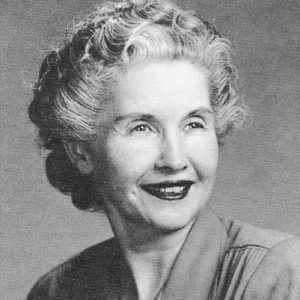calsfoundation@cals.org
Arkansas State University Museum
Arkansas State University Museum, located on the Arkansas State University campus in Jonesboro (Craighead County), is the largest and most comprehensive museum in northeastern Arkansas. It holds significant historic, archaeological, and natural history collections hailing primarily from Arkansas.
The museum originated in 1933 under the name Arkansas State College Historical Museum—a creation of the Arkansas State College History Club. The fledgling museum mounted its first exhibits in four wooden cases in newly built Wilson Hall. In 1948, the museum was incorporated under the name Arkansas State Museum and Historic Library. Through the years, the museum expanded and retracted within Wilson Hall and found housing in temporary campus locations. In 1976, the museum was established in the west wing of the Dean B. Ellis Library complex, where it remains in the twenty-first century.
The museum has had a number of directors over the years. W. G. Shover served as curator/director from 1943 to 1948; Sudie Barnett was director in 1948; Doyle Herron from 1949 to 1953; Jean Rosser Williams from 1953 to 1959; Eugene B. Wittlake from 1959 to 1979; Larry Ball served as acting director in 1980; Glenda Gann and Mary Coles were interim co-directors from 1980 to 1983; Charlott Jones was director from 1983 to 1999; Danny Sessums from 1999 to 2001; Ruth Hawkins was interim director from 2001 to 2006; Marti L. Allen was director from 2006 to 2021; Michael Reinschmidt was director from 2022 to 2023; Elisabeth Engel became interim director in 2023.
Eugene B. Wittlake, a professor of botany, had a strong partner and co-advocate in his wife, Elizabeth Wittlake, during his two decades as director. In addition to collecting avidly, the Wittlakes saw the museum’s potential as a stage for student learning and involved students in collections work, exhibits, and tours. Community interest in the museum was high during that time, and the museum’s animal gallery, installed under Eugene Wittlake, remains popular. Wittlake brought the museum into national recognition in 1973, when he successfully accredited the museum with the American Alliance of Museums (AAM). The AAM is the nation’s principal museum accrediting body, using periodic peer assessment to evaluate a museum’s operations and impact. However, the museum encountered precarious times during the years from 1976 to 1982; it was temporarily closed in 1976. While the west wing of the Dean B. Ellis Library was renovated to accommodate it, its collections were dispersed in storage, and the museum became vulnerable to budget-driven scrutiny felt campus wide. Larry Ball, appointed acting director for the 1980 spring term, faced uphill negotiations as he rallied energies and resources against talk of closure, and he succeeded.
Charlott Jones, an associate professor in art education, was appointed director in 1983. Her accomplishments reflected an affiliation with the new and revolutionary philosophies reshaping museums throughout the United States, driven by the AAM’s new ideals of public education and community involvement. Jones introduced many programs that greatly appealed to the public. Through a Child’s Eyes—an annual juried children’s art show—debuted under Jones’s stewardship, and educator Mona L. Fielder spearheaded the acquisition of a full-size cast of a mastodon skeleton. The “Old Town Arkansas” permanent exhibit opened under Jones, and work began on the “Living Off the Land” exhibit. Jones brought the museum into the digital age and reaccredited with the AAM in 1986 and 1997.
Following Jones’s retirement and the two-year directorship of Danny Sessums, the university appointed Ruth Hawkins, director of Delta Heritage Initiatives, in 2001 to serve concurrently as director of the museum. Hawkins established a system of Arkansas Heritage Sites: the Hemingway-Pfeiffer Museum and Educational Center in Piggott (Clay County), the Southern Tenant Farmers Museum in Tyronza (Poinsett County), and Lakeport Plantation near Lake Village (Chicot County). Historic Dyess Colony: Boyhood Home of Johnny Cash opened as a Heritage Site in 2014.
Marti L. Allen, with a background in museums, art history, and archaeology, became the director in 2006. She put new strategies into action for honing and managing collections. To meet community needs, the museum broadened its public dimension to include children’s exhibits and programs based in science, technology, engineering, and math (STEM), becoming one of the leading informal learning destinations in northeastern Arkansas. The museum debuted the Tinkering Studio and annual TinkerFaire, upgraded the permanent galleries, and installed new galleries, such as the Native American and Rockabilly galleries. Allen diversified the museum’s advisory council and introduced annual diversity events. The museum successfully reaccredited with AAM in 2010 and laid the groundwork for future accreditations. Michael Reinschmidt served as director after Allen. On July 1, 2023, Elisabeth Engel, the museum’s curator of collections since 2015, was named interim director; in August 2024, she was named director of the museum.
Other notable permanent exhibits include “A Walk Through Time” and the hands-on exhibits “The Arkansas Frontier” and “Earthquake! Are You Ready?” All exhibits are free to the public.
For additional information:
Arkansas State University Museum. https://www.astate.edu/a/museum/ (accessed September 29, 2023).
Ball, Larry D., and William M. Clements. Voices from State: An Oral History of Arkansas State University. Jonesboro: Arkansas State University Press, 1984.
Dew, Lee A. The ASU Story: A History of Arkansas State University, 1909–1967. Jonesboro: Arkansas State University Press, 1968.
Edrington, Linda. Interview with Larry D. Ball, November 11, 1997. Transcript. Mid-South Center for Oral History, Jonesboro, Arkansas.
———. Interviews with Charlott Jones, October 15, 1997. Transcript. Mid-South Center for Oral History, Jonesboro, Arkansas.
Marti L. Allen
Arkansas State University Museum














Comments
No comments on this entry yet.